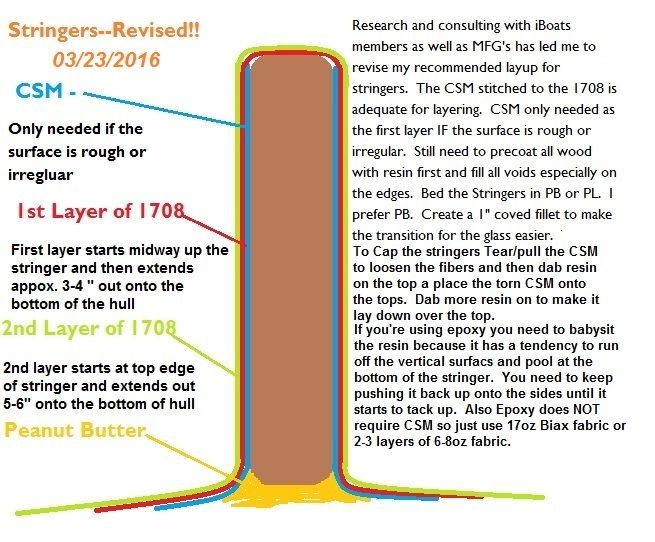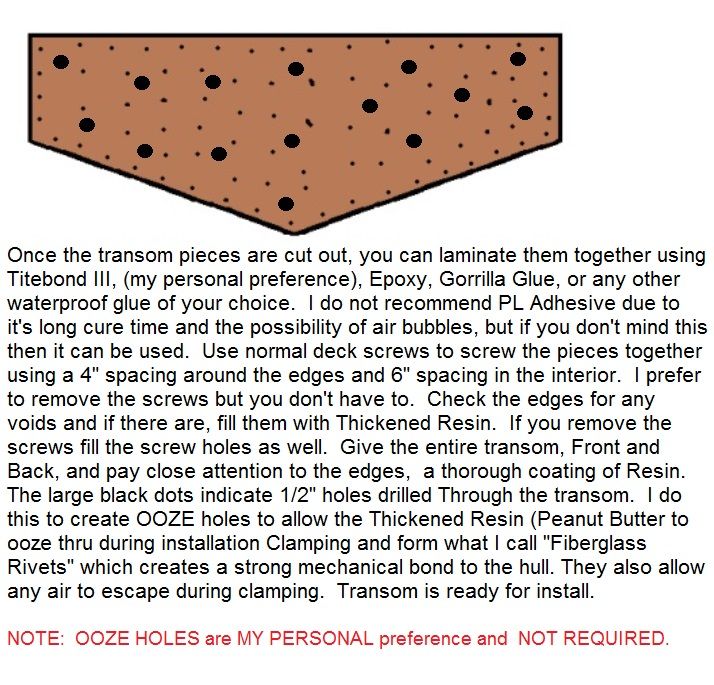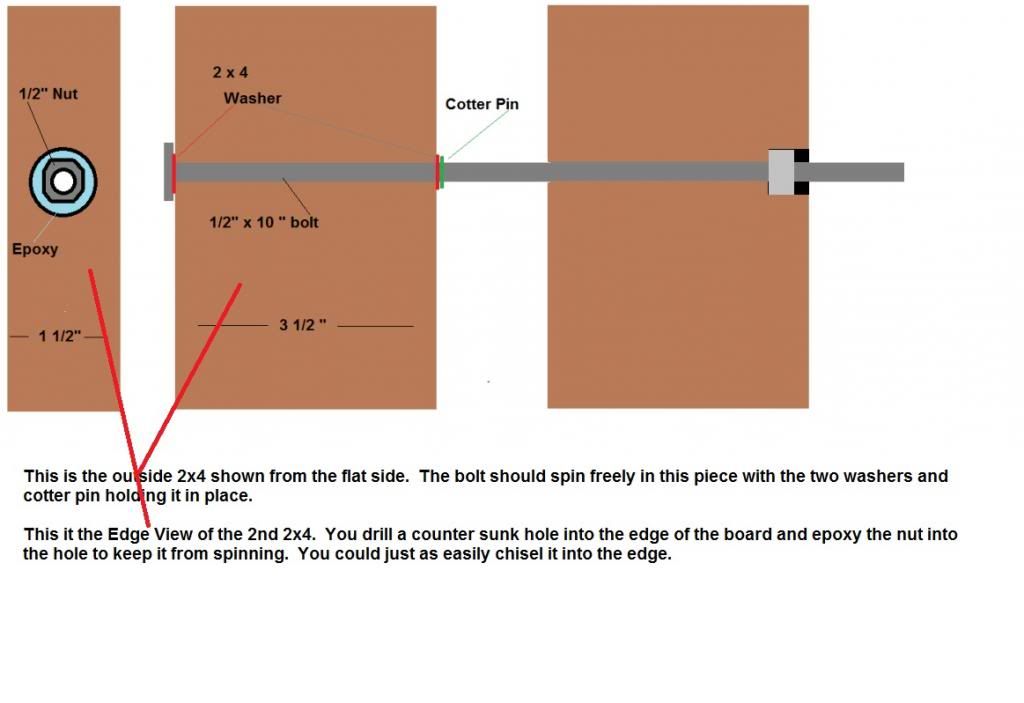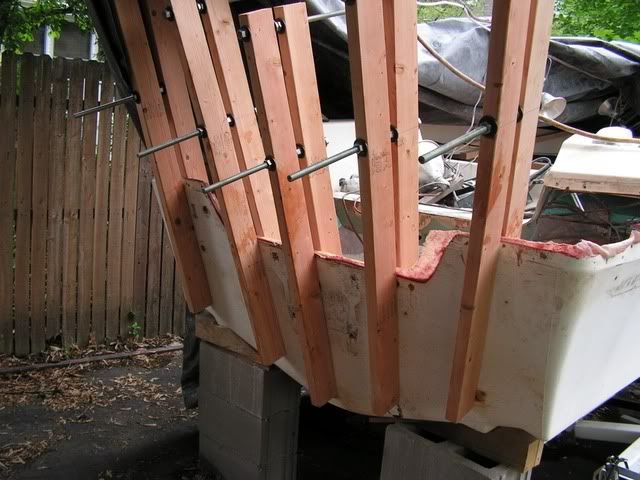Liquid_force
Petty Officer 1st Class
- Joined
- May 7, 2003
- Messages
- 318
A few of you saw my cut through the hull thread, so obviously we're well underway on our little project, but since there seems to be a little interest (and a significant lack of knowledge on my part) I thought I'd start from the beginning.
My bro and I are hard core water sport enthusiasts. In '03 we bought ourselves this '89 Sunbird and upon delivery of a couple cases of beer an uncle installed a custom SS tower. We added a board rack, a bimini top and a pair of 8" Bazooka tubes and off we went. It is no Mastercraft, but for us - it might as well have been.
Had to replace lower unit gears in year #2, and year #5 we did some patchwork and new carpet on the deck knowing we were just buying time.
Long story slightly shorter -- recently, it started having some running issues and we traced it to the fuel tank. It needs to be replaced which means half our floor has to come out which means we'd be idiots not to take the opportunity to rehab the floor.
So here we are.
I'll get some pics posted soon -- I have a few on photobucket but can't access them at the moment.
This is not our boat, but this is what we're working with (Where can I find those seat covers?!?)
http://www.boten.be/fotos/16697-1_800x600.jpg
We cut the floor out from just in front of the engine compartment to just in front of the seats. We were hoping to have a couple inches of good wood along the gunwales but no such luck. We're going to have to replace it all the way across. It'll be most of 2 full sheets of 4x8 plus part of a 3rd.
Stringers appear to be mostly intact. I have already cut out one ~1' section which will have to be patched in - thinking P.B. and a layer of 1708.. May find more when we grind off the sloppy factory glass.
Based on quite a bit of reading I had done I thought it was a no brainer to use epoxy to water proof our exterior plywood -- but WOG has since made a convincing case for poly for everything. That is good to hear because this clearly is not a project we're looking to spend thousands on.
I can't coat plywood with straight polyester can I? Thinned?
My bro and I are hard core water sport enthusiasts. In '03 we bought ourselves this '89 Sunbird and upon delivery of a couple cases of beer an uncle installed a custom SS tower. We added a board rack, a bimini top and a pair of 8" Bazooka tubes and off we went. It is no Mastercraft, but for us - it might as well have been.
Had to replace lower unit gears in year #2, and year #5 we did some patchwork and new carpet on the deck knowing we were just buying time.
Long story slightly shorter -- recently, it started having some running issues and we traced it to the fuel tank. It needs to be replaced which means half our floor has to come out which means we'd be idiots not to take the opportunity to rehab the floor.
So here we are.
I'll get some pics posted soon -- I have a few on photobucket but can't access them at the moment.
This is not our boat, but this is what we're working with (Where can I find those seat covers?!?)
http://www.boten.be/fotos/16697-1_800x600.jpg
We cut the floor out from just in front of the engine compartment to just in front of the seats. We were hoping to have a couple inches of good wood along the gunwales but no such luck. We're going to have to replace it all the way across. It'll be most of 2 full sheets of 4x8 plus part of a 3rd.
Stringers appear to be mostly intact. I have already cut out one ~1' section which will have to be patched in - thinking P.B. and a layer of 1708.. May find more when we grind off the sloppy factory glass.
Based on quite a bit of reading I had done I thought it was a no brainer to use epoxy to water proof our exterior plywood -- but WOG has since made a convincing case for poly for everything. That is good to hear because this clearly is not a project we're looking to spend thousands on.
I can't coat plywood with straight polyester can I? Thinned?
Last edited:





























